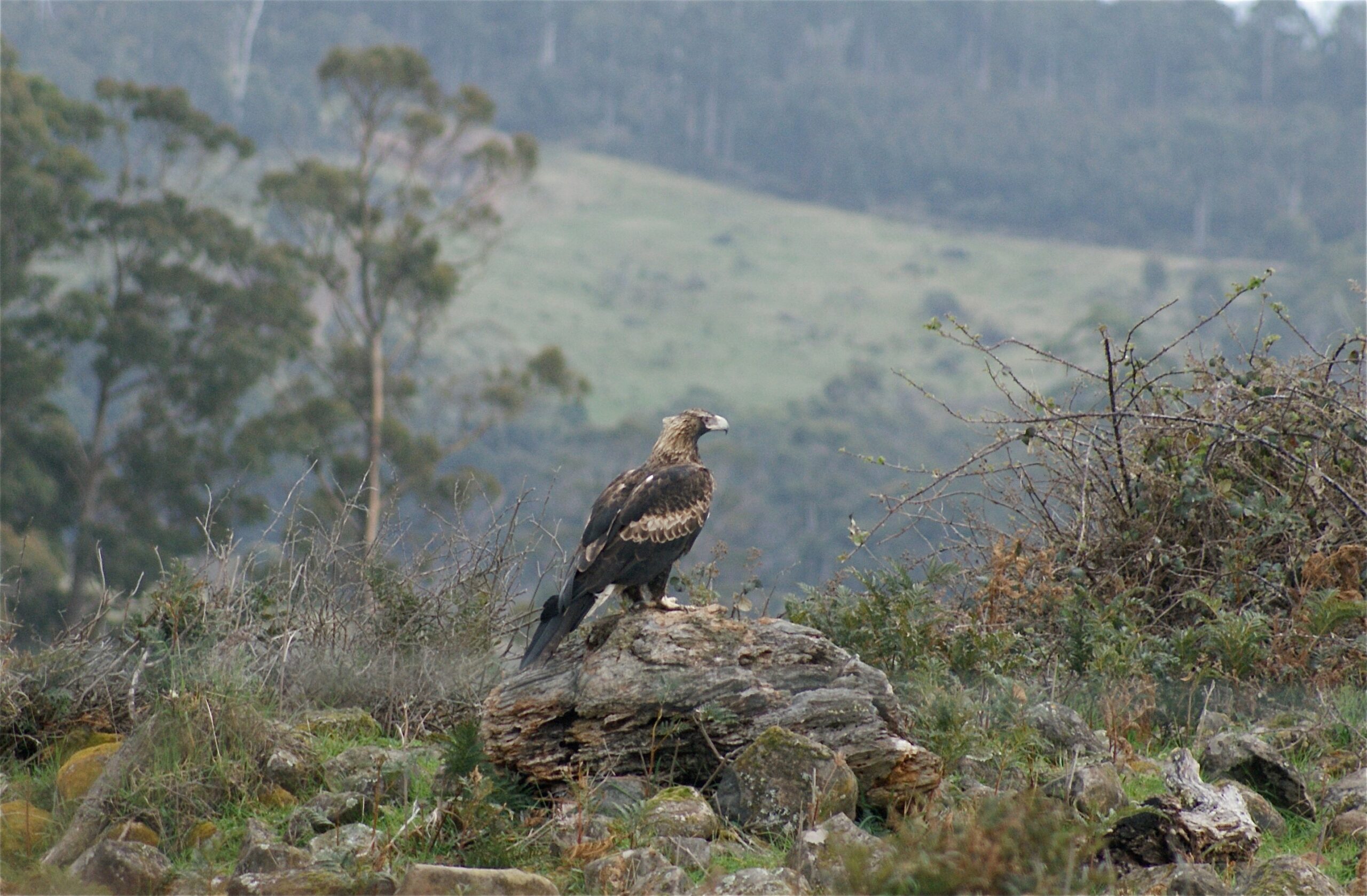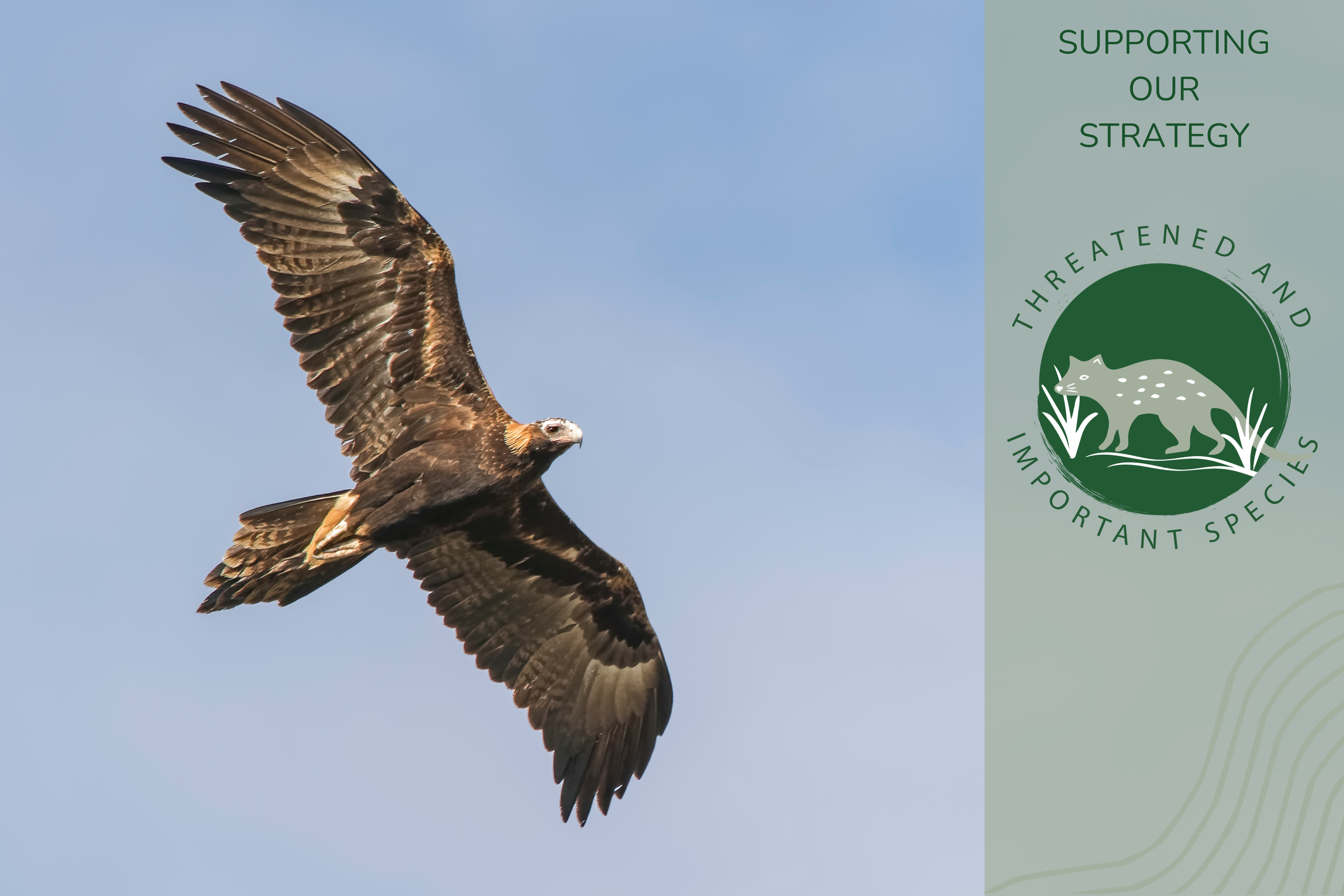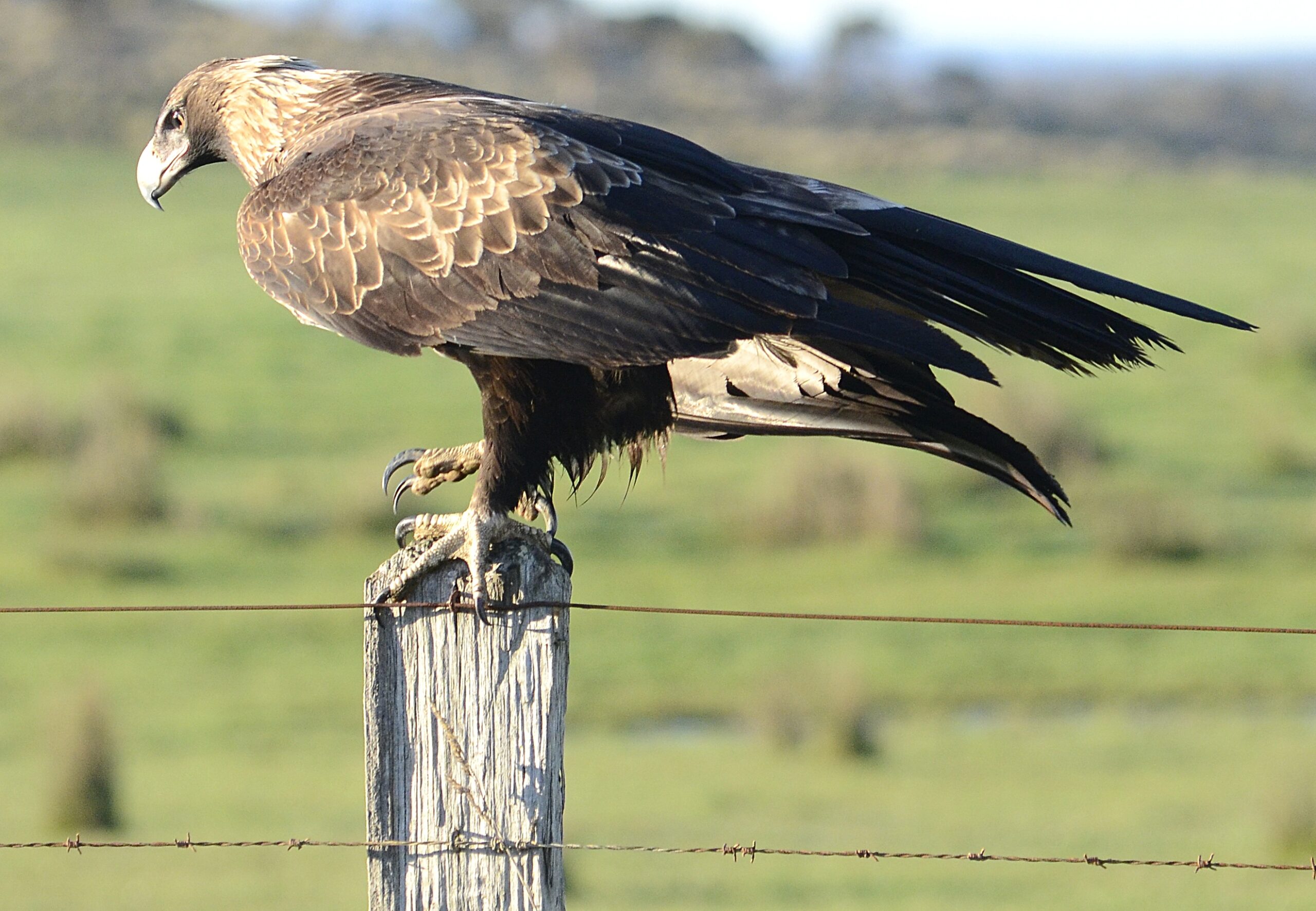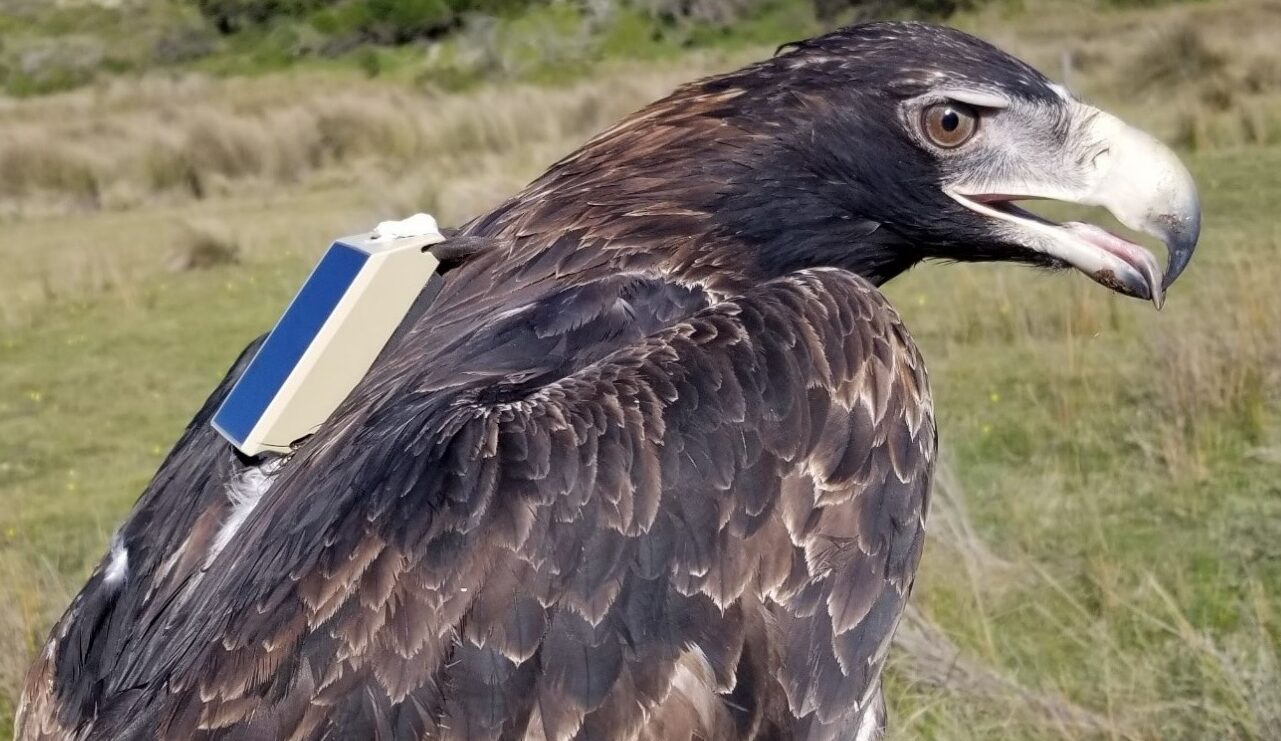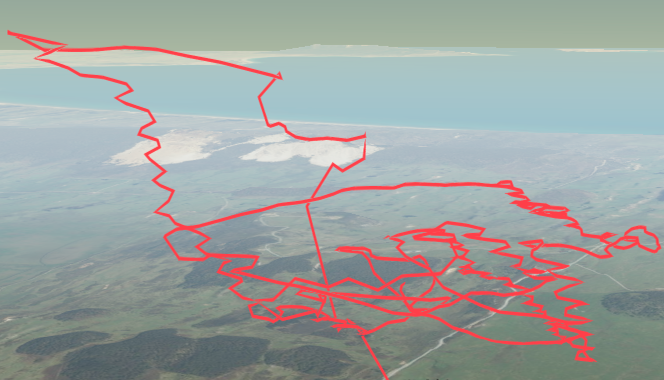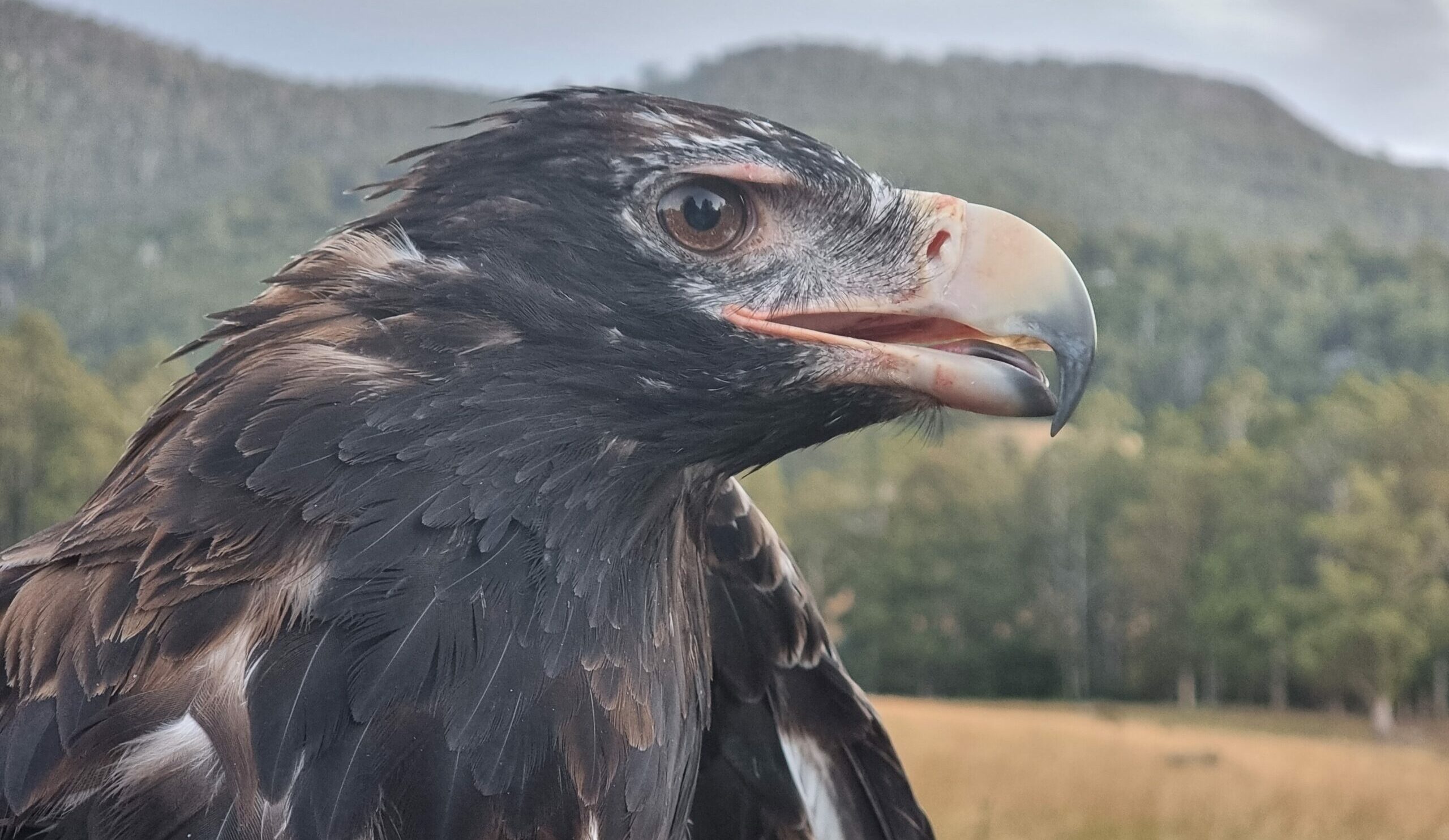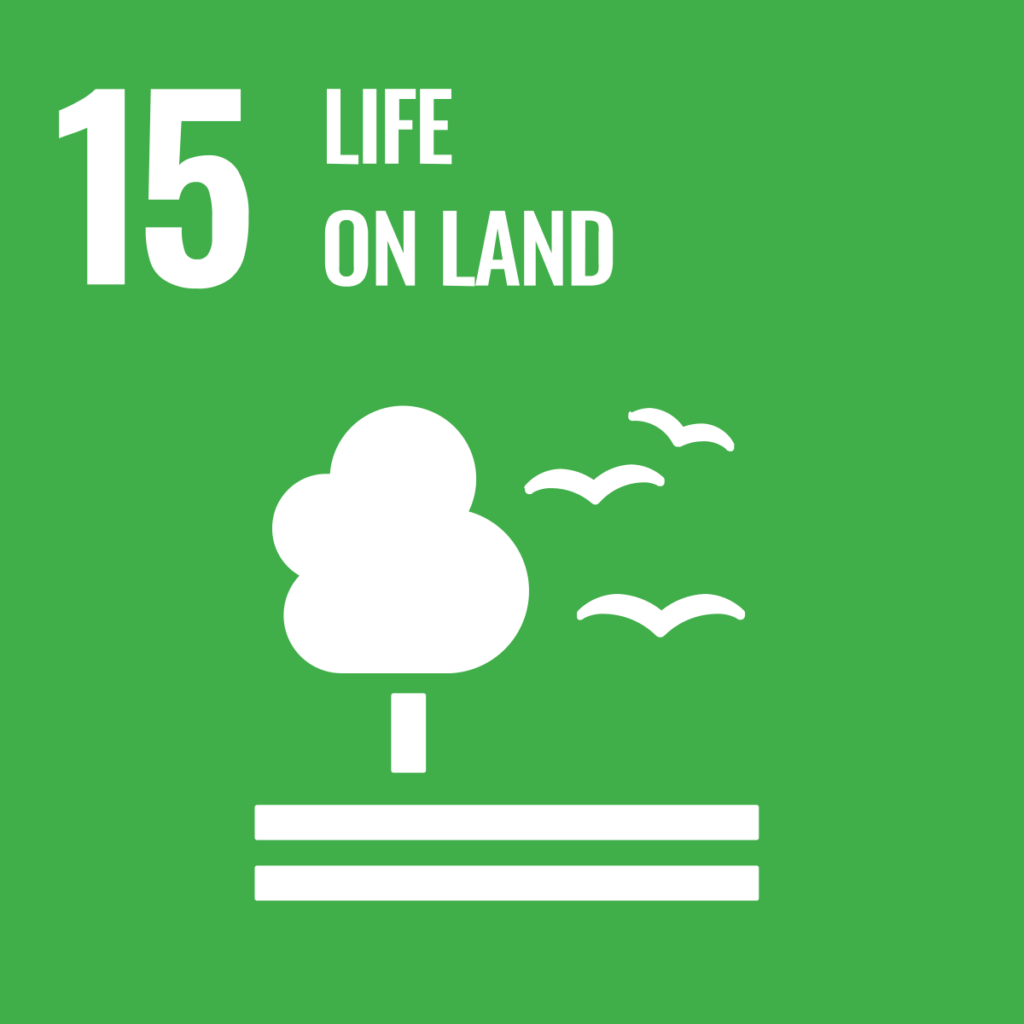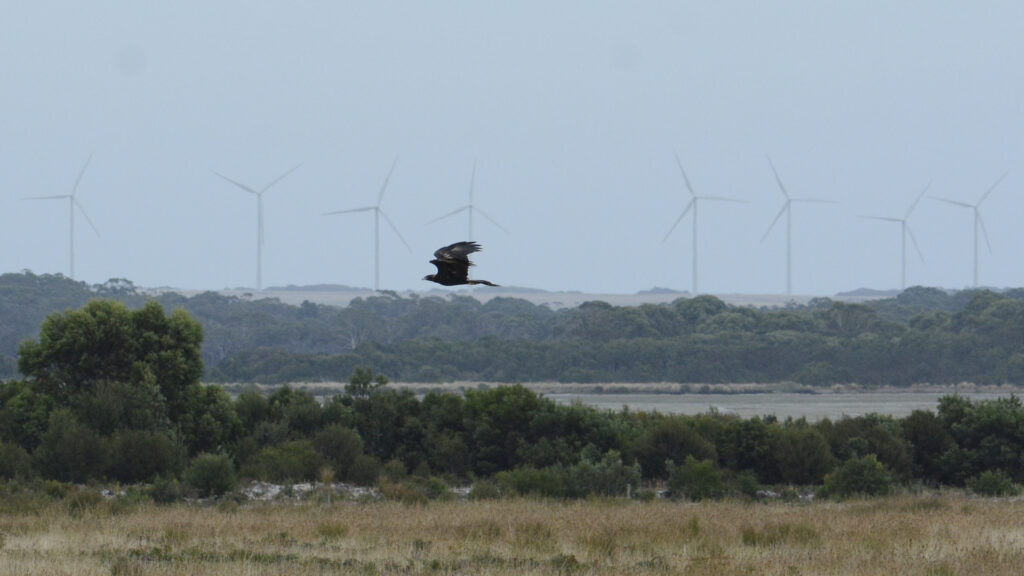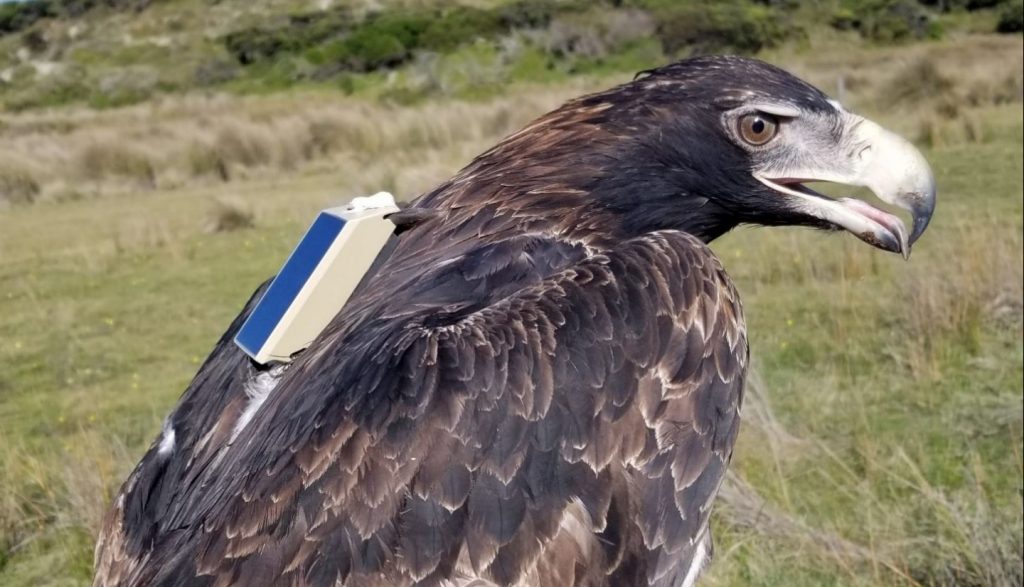Wedge-tailed Eagle Research Fund
Tasmania’s Wedge-tailed Eagle is classified as a separate sub-species to Australia’s mainland population and listed as Endangered. Threats to Wedge-tailed Eagles include loss of habitat and mortalities from interacting with the human world.
There is a lot that is still not understood about Tasmania’s Wedge-tailed Eagles in Tasmania. NRM South is working to address some of these knowledge gaps through the Wedge-Tailed Eagle Research Fund for Cattle Hill Wind Farm. This fund is supporting high quality ecological or other relevant scientific research on Tasmania’s Wedge-tailed Eagles, the results of which will assist with their management and protection.
STRATEGY PRIORITY BS6: Tasmanian wedge-tailed eagle
Through this project, we contributing to improved management outcomes for the Tasmanian Wedge-tailed Eagle.
What we are doing:
In partnership with government and the industry sector, we are managing an Eagle Fund to support researchers in better understanding the ecology and behaviour of Wedge-tailed Eagles, as well as the potential impacts of human-caused threats to the population.
Our Approach
This project is helping to protect Tasmania’s Wedge-tailed Eagle population by;
- Administering the Wedge-tailed Eagle Research Fund to support high quality ecological or other relevant scientific research on Tasmanian Wedge-tailed Eagles, the results of which will assist with their management and protection.
- Coordinating the establishment of an independent Technical Advisory Committee to oversee the Fund.
PROJECT PILLARS WEDGE-TAILED EAGLE
Background
Despite sharing the same name, Tasmania’s Wedge-tailed Eagle (Aquila audax fleayi) is considered to be a separate sub-species to Australia’s mainland population. While their situation is relatively secure in mainland Australia, the state of Tasmania’s population is more precarious. Listed as Endangered under both the Tasmanian Threatened Species Protection Act 1995 and the Commonwealth Environment Protection and Biodiversity Conservation Act 1999, current population estimates are around 1,000 adult birds.
Threats to Wedge-tailed Eagles include loss of habitat (particularly nesting habitat) and mortalities from interacting with the human world – including their active removal by shooting, trapping or poisoning; collisions with powerlines, vehicles, fences and wind turbines; electrocution on powerlines; secondary poisoning from lead and rodenticides, entanglement and pollution.
There is a lot that is still not understood about Tasmania’s Wedge-tailed Eagles in Tasmania, and NRM South is addressing some of these knowledge gaps via the Wedge-Tailed Eagle (WTE) Offset Fund for Cattle Hill Wind Farm. This fund is supporting high quality ecological or other relevant scientific research on Tasmania’s Wedge-tailed Eagles, the results of which will assist with the management and protection of the sub-species.
This Research Fund was established as an offset requirement for the Cattle Hill Wind Farm, which is 80% owned by the Power China Group and 20% by the Goldwind Group.
Research Projects
-
Projects funded and now complete:
2020: Investigating the spatial ecology and habitat use of the Tasmanian wedge-tailed eagle in unmodified landscapes using high-frequency GPS telemetry (Cameron, Pay, Katzner, Koch, Wiersma). - 2021: Estimating the population size of the Tasmanian wedge-tailed eagle (Aquila audax fleayi) using modern genetic techniques (Stojanovic, Cistern, Pay, Burridge, Young, Clarke and Butler).
- 2021: Monitoring wedge-tailed eagle population trends (Hawkins and Potts). Analysis of the Where Where Wedgie data
- 2022: Investigating the spatial ecology and habitat use of Tasmanian wedge-tailed eagles in the Tasmanian Midlands using high-frequency GPS telemetry (Pay, Koch, Cameron, Wiersma, Katzner)
- 2023: Comprehensive analysis of the ecotoxin threat to Tasmanian Wedge-tailed Eagles (Aquila audax fleayi) (Stojanovic)
As of mid 2024, a total of $478,254 has been awarded for Tas WTE research by the Fund.
Independent Technical Advisory Committee
An independent Technical Advisory Committee has been appointed to oversee the Fund. They will decide which projects are supported by the Fund and monitor progress of the projects that have been supported. This committee is comprised of the following members:
- Dr Sarah Munks (independent member)
- Dr Phil Bell (independent member)
- Dr Ivan Lawler (Department of Agriculture, Water and Environment)
- Dr Davina Gregory-Dunsmuir (NRE Tas)
- Dr Cindy Hull, Chair (NRM South)
Achievements to Date
- Research project from Round 1 of funding (2020) completed: Investigating the spatial ecology and habitat use of the Tasmanian wedge-tailed eagle using high-frequency GPS telemetry in unmodified landscapes. Elissa Cameron and James Pay (UTas), Todd Katzner (US Geological Society), Amelia Koch and Jason Wiersma (FPA).
- Research projects from Round 2 of funding (May 2021) completed:
1) Estimate the population size of the Tasmanian wedge-tailed Eagle (Aquila audax fleayi) using modern genetic techniques. James Pay, Chris Burridge and Jakob Butler (UTas), Dejan Stojanovic, Catherine Young and Adam Cistern (ANU), and Judy Clarke (TMAG).
2) Monitoring wedge-tailed eagle population trends. Supporting the analysis of the data obtained in the Where, Where Wedgie study. Clare Hawkins (Bookend Trust) and Joanna Potts (The Analytical Edge). - The third round of grants were advertised in June 2022. Two projects are currently underway:
- 1) Midlands GPS study “Investigating the spatial ecology and habitat use of Tasmanian wedge-tailed eagles in the Tasmanian Midlands using high-frequency GPS telemetry”. Pay, Koch, Cameron, Wiersma, Katzner).
- 2)“Comprehensive analysis of the ecotoxin threat to Tasmanian Wedge-tailed Eagles (Aquila audax fleayi)” Stojanovic, Cisterne, Pay.
As of early 2023, a total of $302,088 has been awarded for Tas WTE research by the Fund.
